Ancestry.com‘s genetic communities are a good way to understand your family’s journey for the last few hundred years. Unlike the ancestry composition percentages, these communities are more recent and include a write up of the history of each group starting in 1700.
Many of my favorite bloggers posted about this yesterday. If you want to understand something about the science which combines the use of trees plus good sized matching segments, I recommend Leah Larkin’s analysis of Ancestry.com‘s white paper here – http://thednageek.com/the-science-behind-genetic-communities-at-ancestrydna/
Since I frequently work with adoptees, I am really hoping this helps with that analysis. I am finding that people with deep American roots have far more communities than those of us with recent immigrant ancestors. The adoptee I am currently working with has six communities! Shown above.
He knows his mother’s father and that is the Deep South community. I suspect that the New Jersey and. Pennsylvania groups are from his Dad, based on other matches at Family Tree DNA. I will report back if this new feature helps for his case.
 The reason this may be helpful with adoptees is the ability to separate matches into the different communities. Clicking on a specific community name gets you to a page with a map for that group and its history stories. There is an icon called Connection at the top left of the page (my red arrow in the image example to the left). Clicking it takes you to a page with information about your connections.
The reason this may be helpful with adoptees is the ability to separate matches into the different communities. Clicking on a specific community name gets you to a page with a map for that group and its history stories. There is an icon called Connection at the top left of the page (my red arrow in the image example to the left). Clicking it takes you to a page with information about your connections.
This connection page shows you how much confidence Ancestry.com has that you belong to this community, lists the common surnames, and has a green button to click called View All Matches. (Yes I have a cousin related to the Ferris who designed the first such wheel).
Clicking View All Matches takes you to your usual match page but with this community as a filter. This may be quite useful. However when I clicked on a green leaf match from that early settlers of New York page, I found a known Swedish match for my cousin. Perhaps that is not the correct ancestor for their common DNA or perhaps that match just happens to also share this community.
Most of my close family have just one or sometimes two communities, probably due to less foreign testers since we descend from fairly recent immigrants.
My 100% Scandinavian cousin JM has only one, Eastern Norwegians., many of them came before the the civil war. My brother also has only one, Western Norwegians, our paternal side which emigrated after the Civil War. He did not get the Jewish Community that our maternal side first cousin got, shown below, presumably because he has less jewish DNA than she does.
The community page also has history stories divided into 25 year increments. Here is the German Jewish story which applies to our family who came in 1935. One problem with the people from our tree assigned to this group on the story page is that many of them are German Catholics but as they have no other descendants tested here, they are lumped in with my German Jewish group.
I was surprised by how nicely the jewish communities are presented. I have been steering my jewish relatives to test at Family Tree DNA or 23andMe since those both have large groups of jewish testers. Also the algorithm change (timber) that removed population specific matching segments, moved almost all my brother’s 4th cousin jewish matches into the distant cousin range, probably correctly. This might also explain his lack of membership in the german jewish community.
So here are some screen shots from the jewish communities for the adoptee whose case I solved.
Here is the promised list of other blogger’s posts about this Genetic Communities feature.
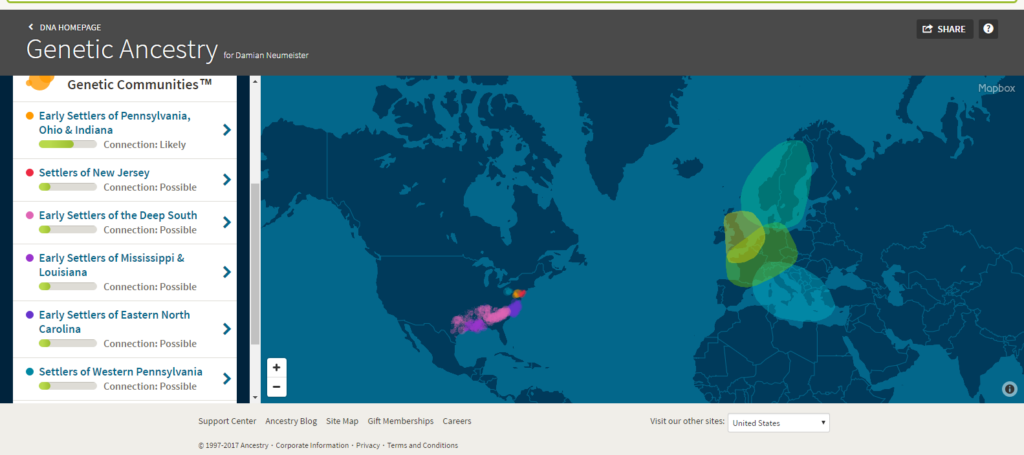
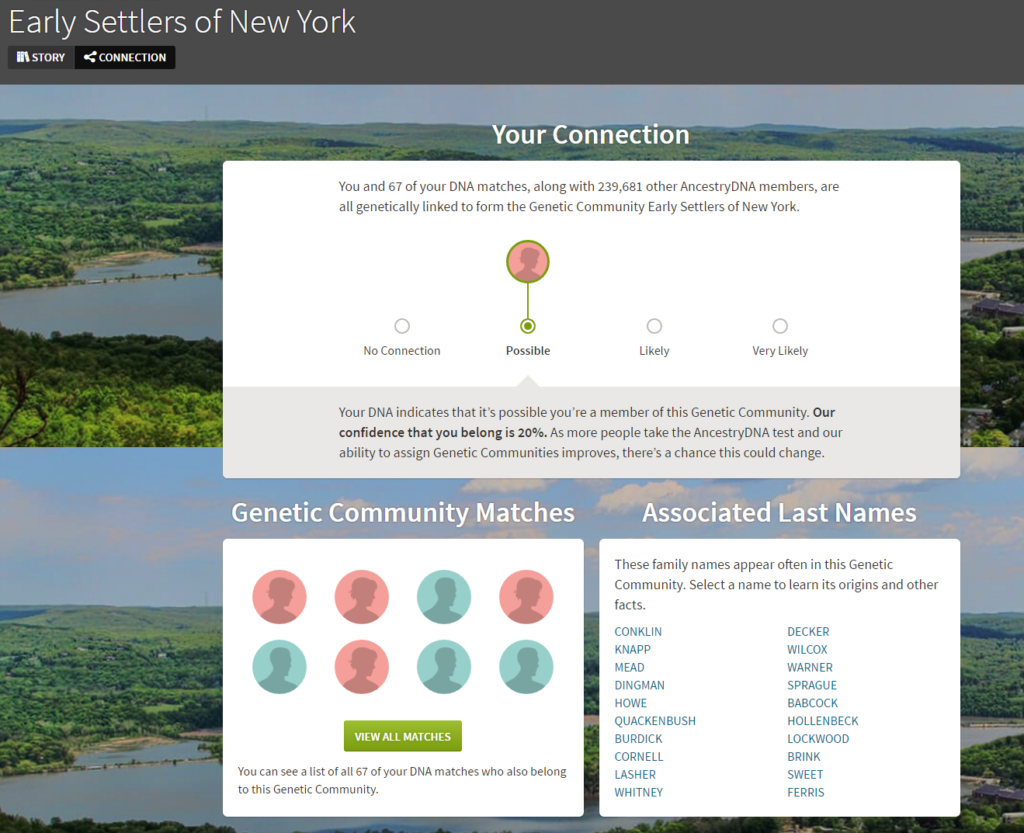
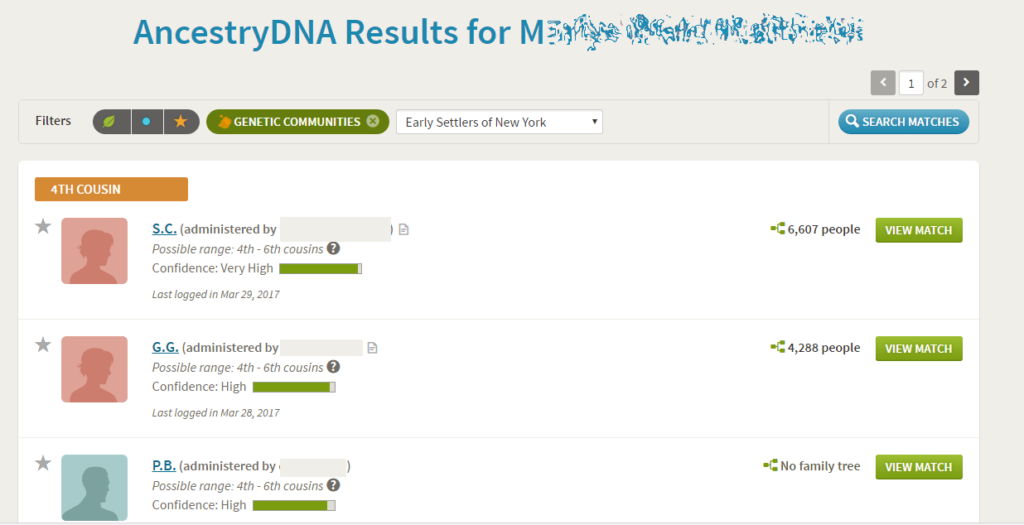
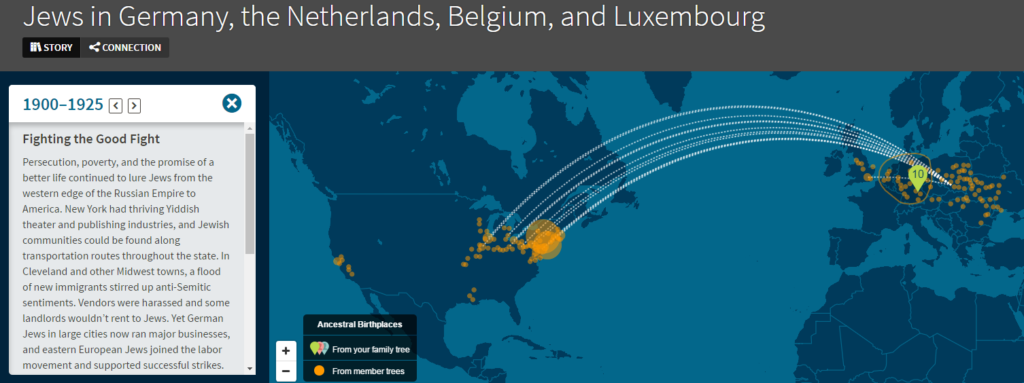
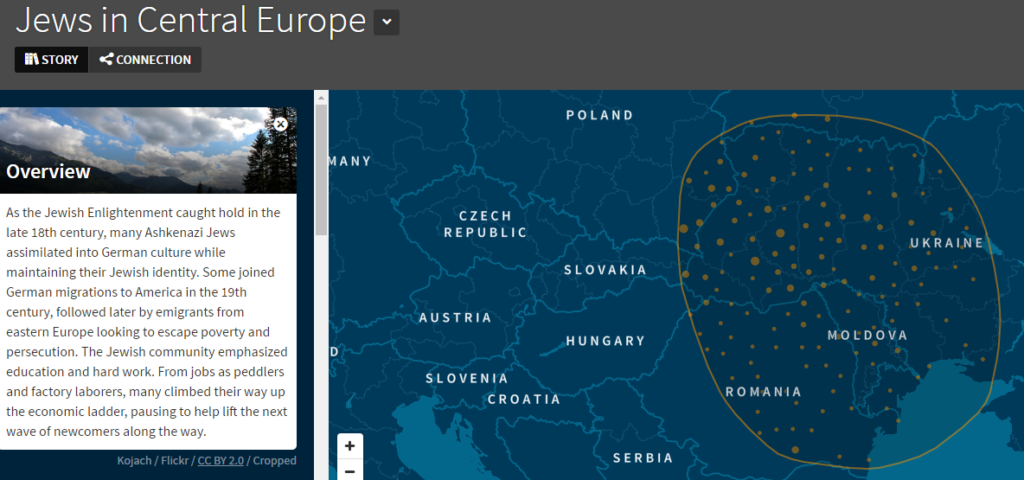
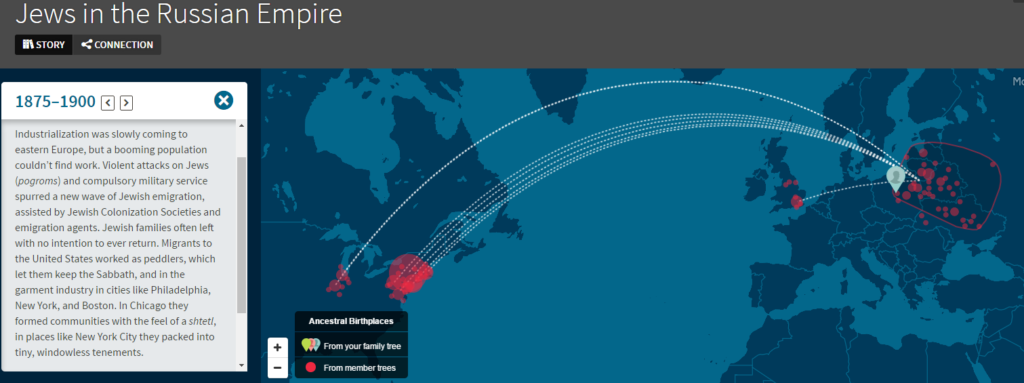
Kitty,
I would be willing to participate in genetic community research. I communicate best via email.
John
Kitty,
I was wondering if you could recommend another DNA test that would show a direct match between my cousin and I ,we just found each other on ancestry and we are both adopted. We download our DNA to GEDmatch and we have 2260 cm. So I think that’s too many to be cousin.
Rene –
Yes that is too many for cousins. You are likely either half or full siblings. Compare your two kits at GEDmatch using the guidelines in the following article to figure out which it is:
http://blog.kittycooper.com/2016/04/full-versus-half-sibling-dna-matches/
If you are still unsure, use my contact form to send me the two kit numbers and I will have a look.
No company can tell for sure what the relationship is from the DNA except parent/child
You’re probably half siblings or aunt/ niece or nephew. Read
http://blog.kittycooper.com/2016/04/full-versus-half-sibling-dna-matches/#comment-462598
And
http://blog.kittycooper.com/2016/08/how-to-tell-the-relationship-from-the-shared-dna/
And if you still are unsure send me the gedmatch numbers via my contact form along with any other information you habe
I’m an adoptee. And here’s my take on my genetic community (I have one):
In late summer of 2015, using the methodology given at DNAAdoption, my DNA matches at Ancestry (all 20 of them, 4th cousin and closer, at that time), and my OBC (no Dad’s name, BTW), I found both of my bio families. Last year, exactly to this past weekend, my maternal sibs and I had our reunion (it was great). So for me, having about 2500 people now in my family tree, the genetic community is a mystery. My closest community member is a third cousin with no tree. I am 83% Irish/10% Great Britain/7% Other. My haplogroup is K1c1b. Yet all my maternal matches are missing from my GC. In fact, my maternal half-sibs and I are in two different Irish communities; their’s reflects our Mother’s tree (Ulster Irish) and mine reflect’s my father’s (Connacht Irish). My second cousins, all maternal, are missing; half of my third cousins (1 paternal, the rest maternal) are missing. Of those in my GC with trees, I am left with paternal matches. Same with the vast majority of fourth cousin matches. In all, I have 57 matches through the new Genetic Communities and only one, with no tree, is a known maternal match at the third cousin level (and this is the top match; the closest match). What GCs have done for me, as an adoptee, is neatly excised my best maternal matches and left me with my father’s side of my tree. Which, if I KNOW this, is great. But if I don’t, is very confusing…not to mention misleading.
The one very best paternal matches I have, which ultimately pointed me to the name of my bio father, isn’t in my genetic community at all. So for Ancestry to claim that these communities were created using my closest genetic matches is interesting, at best. How is a third cousins closer than my half-siblings? We are all loaded into Gedmatch, so I know how much DNA we actually share, and it’s obviously more than a third cousin!
In any case, I am not impressed. For me, if I had had this tool two years ago at the beginning of my search, I question if I would have been as successful as quickly. I think it’s a fun little conversation starter, but as a real genetic tool, it’s sorely lacking.
I would rather they put the effort into more tools like a chromosome browser, I am not impressed with the GC!
Just dropping a hint would love an update w/ the new communities from your perspective 🙂
<3
Thanks Natasha, but I have seen nothing new for my family yet. Some of the people I work with have new stuff in the UK